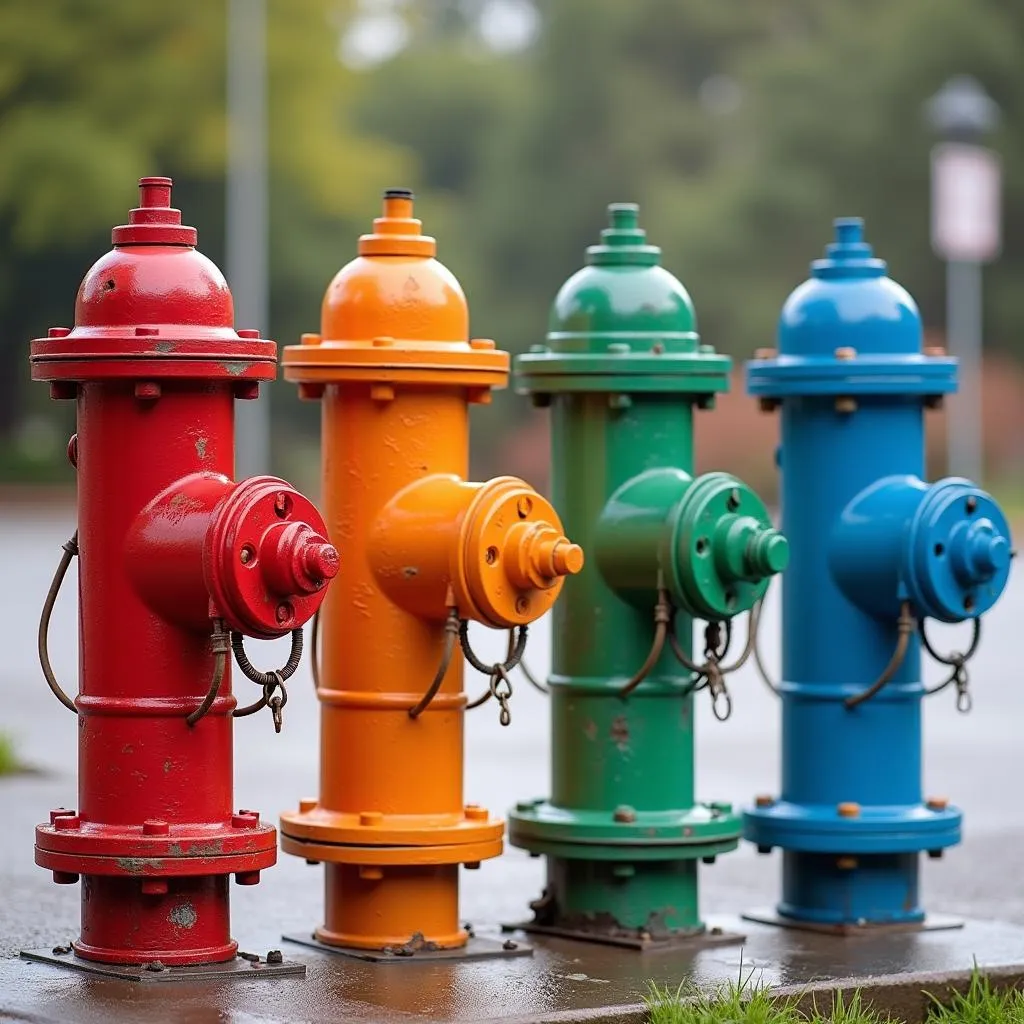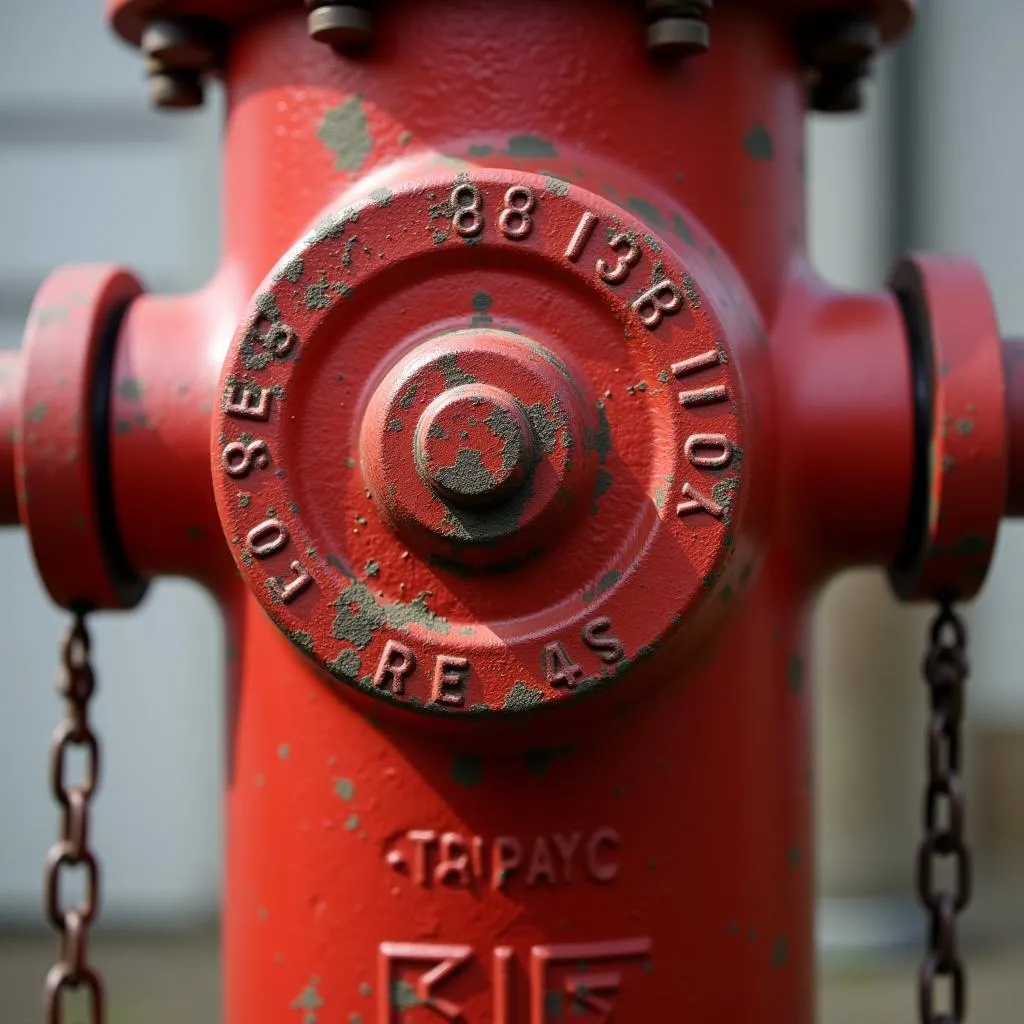When you picture a fire hydrant, what color comes to mind? Most people immediately think of bright red, and they wouldn’t be wrong! But the world of fire hydrant colors is actually a bit more nuanced than that. While red is the most common color, fire hydrants can be found in a range of hues, each with its own specific meaning. Understanding these colors can be surprisingly helpful, especially for firefighters who rely on them in emergencies.
Decoding the Color Code of Fire Hydrants
The color of a fire hydrant isn’t just about aesthetics – it’s a vital communication tool for firefighters. The different colors indicate the water flow rate, which is crucial information when battling a fire. Let’s break down the color code:
-
Red: This is the most common color for fire hydrants and typically indicates a water flow rate of less than 500 gallons per minute (GPM).
-
Orange: Fire hydrants painted orange signal a flow rate between 500-1000 GPM.
-
Green: Green fire hydrants boast a high flow rate of 1000-1500 GPM, making them invaluable for larger fires.
-
Blue: If you see a blue fire hydrant, it means it’s connected to a high-pressure water system, delivering over 1500 GPM. These hydrants are often found in areas with a higher risk of large fires, like industrial zones.
-
Violet: Violet-colored fire hydrants are a bit unusual and typically indicate that they are connected to a non-potable water source, such as a lake or pond.
 Different Colored Fire Hydrants
Different Colored Fire Hydrants
Why is Red the Most Popular Color for Fire Hydrants?
While practicality dictates the color code, there are several reasons why red reigns supreme for fire hydrants:
-
Visibility: Red is a highly visible color, especially in low-light conditions. This is crucial for firefighters to quickly locate hydrants in an emergency.
-
Universality: Red is globally recognized as a color associated with danger and warning. This makes it a universally understood symbol for fire safety.
-
Historical Significance: Early fire hydrants were made of iron and painted black, which made them blend into the surroundings. The switch to red happened later, likely to enhance their visibility and establish a clear visual identity for these essential pieces of equipment.
Beyond the Basics: Variations and Exceptions
While the color code provides a general guideline, it’s worth noting that there can be some variations depending on local regulations and practices. Some areas might use additional colors or markings to indicate specific features or conditions of the hydrant.
 Close-up of Fire Hydrant Markings
Close-up of Fire Hydrant Markings
The Importance of Maintaining Fire Hydrants
Fire hydrants are essential components of fire safety infrastructure. Regular maintenance and inspection are crucial to ensure they function correctly when needed. Here are some key reasons why maintaining fire hydrants is vital:
-
Reliable Water Supply: A well-maintained hydrant guarantees a consistent and reliable water supply, allowing firefighters to effectively combat fires.
-
Time-Saving: Knowing the location and condition of hydrants beforehand saves valuable time during an emergency response.
-
Cost-Effectiveness: Regular maintenance prevents costly repairs or replacements down the line.
Fire Hydrants: More Than Meets the Eye
The next time you walk past a fire hydrant, take a moment to appreciate its purpose and the information its color conveys. These seemingly simple devices play a crucial role in keeping our communities safe.
Remember: Fire hydrants are for emergency use only. Tampering with them can have serious consequences and hinder firefighting efforts.
FAQ
Q: Can I paint my own fire hydrant?
A: No, painting a fire hydrant is illegal and can interfere with its visibility and functionality.
Q: What should I do if I see a damaged fire hydrant?
A: Report it to your local fire department or water utility company immediately.
Need Help?
Have questions about fire safety or need assistance with your home or business? Contact us at [Phone Number] or email us at [Email Address]. Our team is available 24/7 to assist you. Visit our office at [Address] for expert advice and solutions tailored to your needs.

